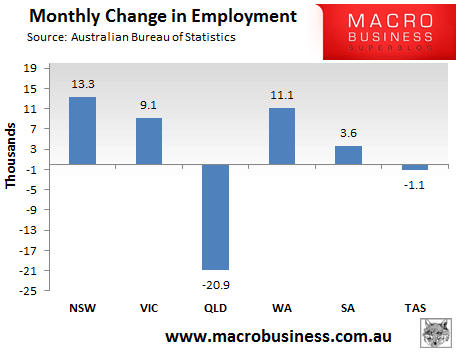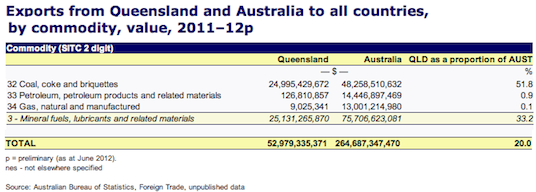
Followers of my previous blog may remember that I have a bit of a penchant for worrying about the Queensland banking system due to the on-going weakness of the local residential and commercial property markets particularly in key areas where regional banks were very active. The bank that has been at the back of the pack for some time now is the Bank of Queensland, as I noted on MB a year ago. At that time I mentioned that although the CEO was giving an optimistic message for the future, provisions were still on the rise and the future really didn’t look that bright:
The acting chief executive Ram Kangatharan used the improvement in the bad debts from H1 to H2 in 2011 as a sign that the bad debt position was recovering. But the reason the position is better was because the commercial write-down in H1 was so large. The underlying trend in the provision data is still upwards. I get the feeling that the bank is trying to leverage the natural disasters to portray this as a “one-off” but the asset quality metrics in their own balance sheet don’t seem to support this. Loan repayments overdue by 90 days have continued to increase in 2011 H2 and are now almost 50 per cent greater than 12 months ago at $483 million.
Move on a year, nearly to the day, and the AFR delivers this:
As Bank of Queensland prepares to report the first loss by an Australian bank in two decades, bank analysts are asking whether its bad debt problems highlight a deeper issue for the country’s financial sector.
After a series of bad debt write-offs amid deterioration in the Queensland economy, BoQ has told shareholders to expect a loss of between $16 million and $21 million.
While most analysts agree that the issues at BoQ are specific to the bank, they warn that a prolonged downturn in Queensland could present a more widespread risk.
“BoQ’s increase in its bad and doubtful debts is unlikely to be replicated by the major banks . . .,” Deutsche Bank analyst James Freeman said in a report. “That said, it is clear . . . that conditions in South-east Queensland remain challenging and . . . we believe that the bad debt environment for the banks over the next 12-24 months is likely to deteriorate.”
Earlier this month, BoQ increased provisions for bad debts by $15 million. This was on top of a sharp increase in bad debts that hit the bank earlier this year, forcing it to report a $91 million loss for the first half of the 2012 financial year. For the second half of the year, BoQ has flagged a profit of between $70 million and $75 million. But this won’t be enough to save it from a full-year loss – the first for an Australian bank since ANZ Banking Group and Westpac Banking Corp were hit during the recession in 1992.
So the bank is once again giving an optimistic view of the coming year but there are again reasons to question this outlook. Although we have recently seen an uptick in Queensland mortgage lodgements and transfers there has been a recent uptick in unemployment:
Queensland has recorded the worst unemployment figure in three years, with a seasonally adjusted unemployment rate of 6.3 per cent in September 2012.
The figures issued today by the Australian Bureau of Statistics show Queensland’s unemployment rate increasing progressively since April, when unemployment was 5.2 per cent.
Queensland’s unemployment rose to 5.8 per cent in May and to 6.0 per cent in August before jumping to 6.3 per cent in September.
It is the state’s worst unemployment outcome since September 2009 and harks back to 2003, when the Queensland economy was shaking off double-digit unemployment figures. It is also the second highest rate in the country behind Tasmania on 7.3 per cent.

This rise in unemployment is most likely attributed to recent state public sector cuts, something I have discussed previously, but this certainly isn’t the only issue. As H&H has been covering on a daily basis, Australia’s main commodities exports are suffering from significant price corrections and this is being led by coal. A glance at Queensland’s commodity export data tells you why this is a very big issue for the state:

47% of Queensland’s commodity exports are in coal which means the state is extremely exposed to a prolonged downturn. The recent price weakness has already seen the closure of mines in Queensland which again is likely to flow back into unemployment, directly and indirectly. Given the state government has given a strong political commitment to lowering Queensland’s debt over its term this is also likely, if sustained, to flow into renewed public sector cuts.
Lower interest rates may spur on private sector borrowing, although recent data doesn’t look too promising, but overall the Queensland economy appears to be facing some fairly serious headwinds over the next few quarters. This certainly isn’t an environment in which I would be overly optimistic about a regional bank that already has balance sheet issues. As the AFR article suggests the banks problems may be unique to it, but that doesn’t mean I don’t still see it as a bellwether of the Queensland, and more broadly the Australian banking system.